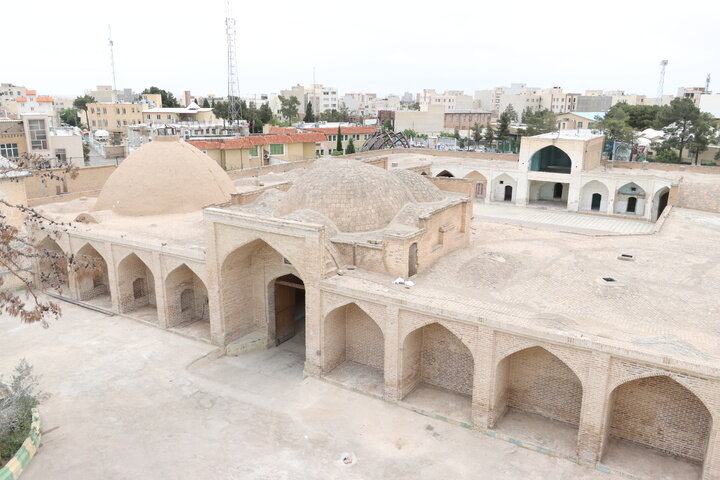TEHRAN – The northern facade of the Semnan caravanserai has been restored to its previous state as part of a major project to establish a huge tourist inn.
According to local tourism officials, the restoration project aims to prepare the caravanserai for public visits and to host cultural programs.
The official said the caravanserai, which has been listed as a national heritage site since 1973, served as Semnan’s central prison for 40 years until 2020.
This caravanserai is one of 999 caravanserais built across the country by order of Shah Abbas the Great, the fifth Safavid king of Iran. The site area is 8,500 square meters and has four iwans (porches) and two entrances.
Caravanserai, also called caravansary, is a coined word combining “caravan” and “sara”. The former refers to a group of travelers, while the latter refers to a building. These structures often boasted massive gates supported by high load-bearing walls. The rooms were built around a courtyard, with stables behind it and the door in the corner of the garden.
The earliest caravanserai in Iran date back to the Achaemenid period (550-330 BC). Centuries later, during the reign of Shah Abbas I from 1588 to 1629, a network of caravanserais was set up across the country. These roadside inns were strategically placed along the ancient caravan routes of the Islamic world, providing shelter for people, their supplies, and animals. The former Silk Road is the most famous example, dotted with caravanserais that once facilitated trade and long-distance travel.
Staying in or simply visiting a centuries-old caravanserai is a memorable experience for many visitors to Iran, allowing them to immerse themselves in the past and travel back in time. Stories abound of merchants haggling over prices and telling each other their difficult journeys while camels lazily nibble on hay.
morning

